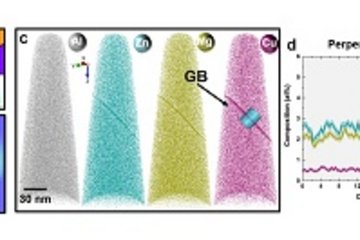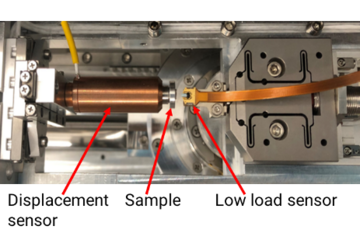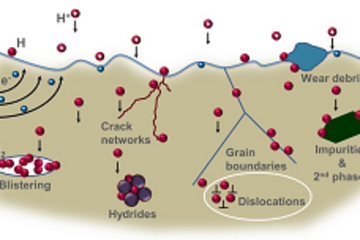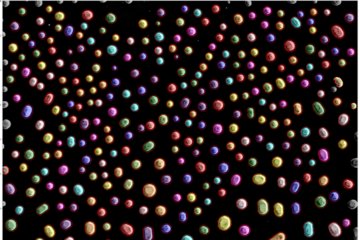All genres
1.
Journal Article
Efficient thermomechanically coupled FE-FFT-based multiscale simulation of polycrystals. PAMM 23 (2), e202300058 (2023)
2.
Journal Article
Investigation of vacancy trapping by solutes during quenching in aluminum alloys. Acta Materialia 254, 118969 (2023)
3.
Journal Article
Combined modeling and experimental characterization of Mn segregation and spinodal decomposition along dislocation lines in Fe–Mn alloys. Acta Materialia 251, 118873 (2023)
4.
Journal Article
Machine-learning-based surrogate modeling of microstructure evolution using phase-field. Computational Materials Science 214, 111750 (2022)
5.
Journal Article
Finite-deformation phase-field microelasticity with application to dislocation core and reaction modeling in fcc crystals. Journal of the Mechanics and Physics of Solids 164, 104897 (2022)
6.
Journal Article
Chemo-Mechanical Phase-Field Modeling of Iron Oxide Reduction with Hydrogen. Acta Materialia 231, 117899 (2022)
7.
Journal Article
Modeling and simulation of microstructure in metallic systems based on multi-physics approaches. npj Computational Materials 8, 93 (2022)
8.
Journal Article
A Review of FE-FFT-Based Two-Scale Methods for Computational Modeling of Microstructure Evolution and Macroscopic Material Behavior. Archives of Computational Methods in Engineering 29, pp. 4115 - 4135 (2022)
9.
Journal Article
A geometrically adapted reduced set of frequencies for a FFT-based microstructure simulation. Computer Methods in Applied Mechanics and Engineering 386, 114131 (2021)
10.
Journal Article
The hidden structure dependence of the chemical life of dislocations. Science Advances 7 (16), eabf0563 (2021)
11.
Journal Article
Phase-field modeling of chemoelastic binodal/spinodal relations and solute segregation to defects in binary alloys. Materials 14 (7), 1787 (2021)
12.
Journal Article
Efficient two-scale FE-FFT-based mechanical process simulation of elasto-viscoplastic polycrystals at finite strains. Computer Methods in Applied Mechanics and Engineering 374, 113566 (2021)
13.
Journal Article
FFT-based simulation using a reduced set of frequencies adapted to the underlying microstructure. Computer Methods in Materials Science 21 (1), pp. 51 - 58 (2021)
14.
Journal Article
Multi-component chemo-mechanics based on transport relations for the chemical potential. Computer Methods in Applied Mechanics and Engineering 365, 113029 (2020)
15.
Journal Article
Comparative modeling of the disregistry and Peierls stress for dissociated edge and screw dislocations in Al. International Journal of Plasticity 129, 102689 (2020)
16.
Journal Article
Effect of Twin Boundary Motion and Dislocation-Twin Interaction on Mechanical Behavior in Fcc Metals. Materials 13 (10), 2238 (2020)
17.
Journal Article
A grain boundary model considering the grain misorientation within a geometrically nonlinear gradient-extended crystal viscoplasticity theory. Proceedings of the Royal Society A: Mathematical, Physical and Engineering Sciences 476 (2235), 20190581 (2020)
18.
Journal Article
Publisher Correction: Unveiling the Re effect in Ni-based single crystal superalloys. Nature Communications 11 (1), 1076 (2020)
19.
Journal Article
Constitutive relations for polar continua based on statistical mechanics and spatial averaging. Proceedings of the Royal Society A: Mathematical, Physical and Engineering Sciences 476 (2233), 20190407 (2020)
20.
Journal Article
Unveiling the Re effect in Ni-based single crystal superalloys. Nature Communications 11, 389 (2020)











